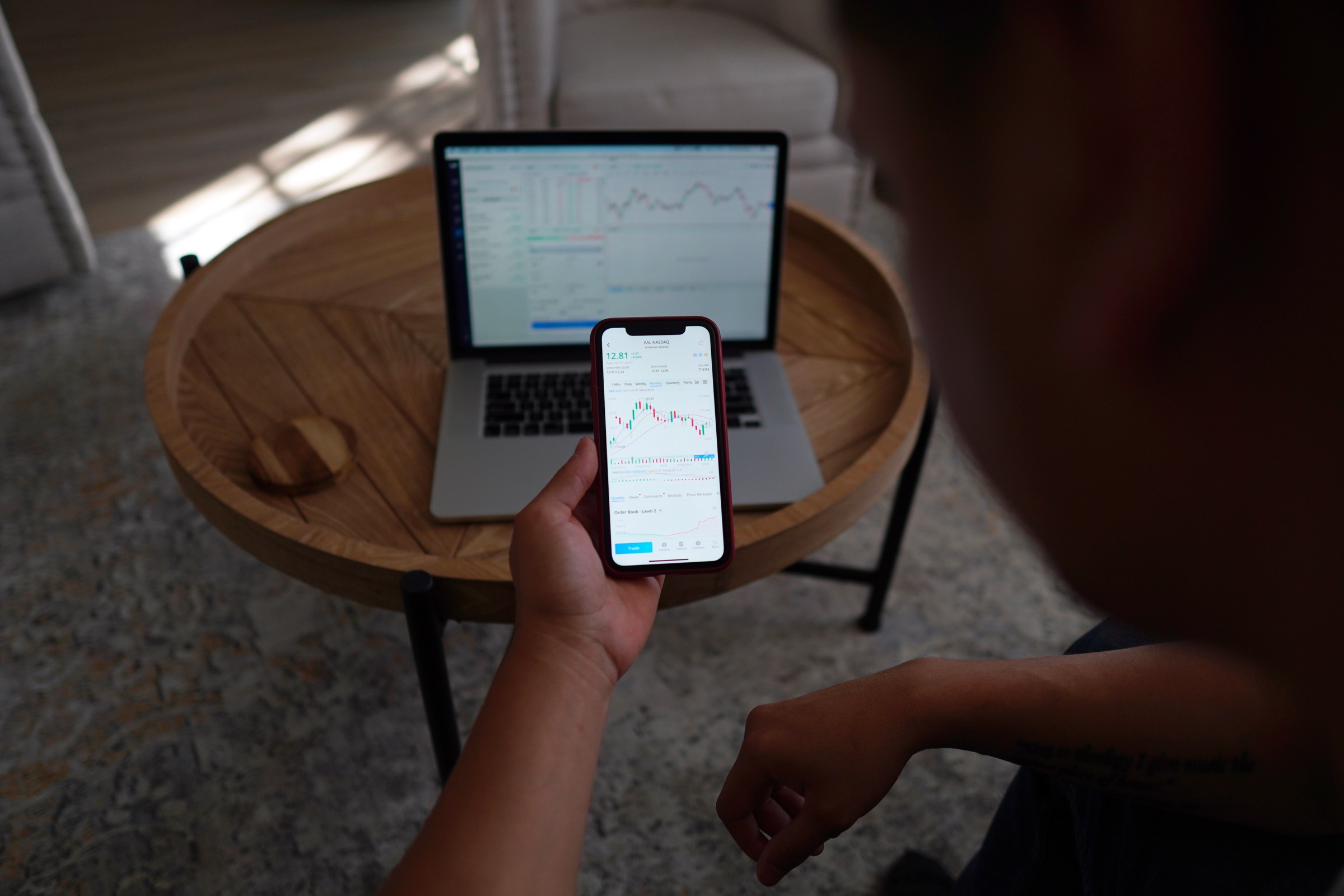How to Start Your Own Business at Home
Starting your own business at home is an exciting prospect. In the digital age, all the tools you need to get started are right at your fingertips. As for advice, there are thousands of guides available online, with information on every kind of business.
That said, not all advice is beneficial, especially when it’s not tailored to your specific goals, resources, and passions. Sorting through it all to find the best guidelines can be a daunting task. Don’t worry 一 we’re here to help!

It’s a Great Time to Start Your Business
As isolating as starting a business can feel, the good news is you’re not alone.
According to the US Small Business Administration, 50% of all US businesses are home-based. 60.1% of sole proprietorships (entities run by one person) operate from home, as do 23.3% of small businesses (entities with fewer than 500 employees).
The rise of eCommerce has only opened up more avenues for entrepreneurs in recent years. Online retailers in the US recorded $870.78 billion in sales over 2021. What started as an industry adjustment to the pandemic has created a thriving online market for small home-based businesses.
But how do you start a business at home? Or, rather, what’s the best approach to guarantee a return on the time, money, and energy you invest?
Everything You Need To Know Simplified
This guide will break down the process of evolving your business idea from start to sales. We’ll distill the most valuable principles into simple, actional steps you can start taking today. We’ll evaluate the trends successful startups use and how you can leverage them.
Throughout, we’ll equip you with the best strategies for starting a small business, from marketing to operations to finances. It’s a lot of information to process for a single business idea, so we’ve split the process in two: research and planning for execution.
Let’s talk about the first phase.
A better way to manage your finances
With Hiveage you can send elegant invoices to your customers, accept online payments, and manage your team — all in one place.
Research
Knowledge is a business owner’s most valuable asset, and that’s true for home-based entrepreneurs and Fortune 500 CEOs. When it comes to implementing a business idea, starting with proper research makes planning and execution that much easier

Here’s what you need to look into.
Defining the Basics for Your Business Idea
We spoke briefly about the sheer amount of information available online. To filter out the noise and hone in on the most relevant advice for a profitable home business idea, you need to define the basics of your future venture. Before you even know what you want to call it, you should know what your business is.
Start with the broad-picture considerations with regards to the business idea. What product or service do you want to sell? Do you want to retail in-person, online, or with a hybrid approach. Are you going to run it alone as a sole proprietorship or employ people as a small business?
These broader questions will give you a base to solidify your business idea. From there, you can hone in on the practical considerations of each answer. For example, if you’re selling a physical product from your home, you’ll need to consider how shipping will work. If you’re selling a digital service, you’ll need to invest in an eCommerce website or platform.
If you’re selling anything at all, you’ll need a reliable and secure payment management system.
Taking stock of resources
There’s research you can do about your business idea before even opening a web browser. Start by listing the resources you have available to operate your business. Specifically, take stock of capital, skills, equipment, labor, materials, and workspace. Only list what you already have right now.
A resource inventory offers you two crucial insights.
Firstly, it sets realistic expectations around what you can do initially about the business idea. When starting a business, it’s tempting to visualize how it looks a few years from now, but you need to ground that vision in the present to get there.
Secondly, this inventory will reveal the resource gaps you need to fill. That might mean seeking out investment, buying equipment, hiring skills you don’t have in-house, etc, That comes in the planning phase, but it starts here.
Market Research
Having a resource inventory comes in handy when you’re doing market research for the business idea too. It’s a framework to focus your search on industry questions specific to your situation. For a small home-based business, use these questions to analyze your market:
- What are the trends driving my industry?
- Is there a genuine demand for what I want to sell?
- Who is my target audience?
- What do I need to reach potential customers?
- Who are my competitors and what are they doing?
A better way to manage your finances
With Hiveage you can send elegant invoices to your customers, accept online payments, and manage your team — all in one place.
Trends are anything driving change in the industry of your business idea. You should know the current state of your market, but also how it could look by the time you open your business.

The demand for your product is defined by your target audience’s needs. Think of your product as a solution. What problems are you trying to solve? Can you do it in unique ways that set you apart from the competition?
Your Ideal Customer
A target audience refers to a group of customers, which can be a little abstract and hard to define. One way to add specificity to your research on the business idea is to think of one person instead of a group 一 the ideal customer.
Your ideal customer is a profile describing one member of your audience This is the customer who would get the most value out of your business idea. This is who you want to invest your resources into reaching, engaging with, and selling to.
It doesn’t necessarily have to be a person. For a business-to-business (B2B) venture, your ideal customer would be a hypothetical company that meets the same criteria. Regardless, defining a single profile over a group will help maximize your return on investment (ROI), however limited your resources.
Pre-operational Expenses
Before you can draft a business plan and execute it, you need to know the costs involved. Opening a business doesn’t have to be expensive, but it’s still an investment with lots of variables.
The costs involved in home business ideas aren’t limited to in-house expenses. As an entrepreneur, there may be services you need to outsource, like web hosting, graphic design, legal council, social media management etc. Some costs overlap across industries, while others are niche-specific. This is the time to research the startup costs specific to your industry.
Let’s start with the initial expenses. Not all of these may be applicable to your business, but they’re good points to research nonetheless. Generally, you’re looking at:
- Business registration fees
- Application fees for any permits or certifications
- Accounting services (e.g. tax preparation)
- Website design and hosting
- Legal expenses
Operational Expenses
Pre-operational expenses cover the costs of "opening your doors". Operational costs are all the overheads of running a business. New business owners tend to underestimate what they’ll need to pay for over the course of a year on their home business ideas.
It’s tempting to think you can make do with the resources you have, or that you’ll find a way to stretch them, but this can put you on the back foot. Taking the time to document potential overheads of your business idea will maximize your resources and limit unnecessary debts.
If you’re selling a product, you’ll need to work out the cost of production per unit. What raw materials and equipment do you need to make it? Do you need to hire someone with the skills to produce it or are you doing it yourself? Will it need dedicated storage in your house? What kind of shipping will you need to get it to customers? Would you be operating your own online store?
For a business idea like freelance graphic design, consider the tools that facilitate your service. Let’s stick with the graphic design example.
You’d need to account for software like Adobe Photoshop or InDesign, which are subscription-based platforms. Your "raw materials" might be stock images and videos. While many sites offer free media for commercial use, your pro-level competitors invest in higher-end stock libraries like iStock and Getty Images, which have licensing fees. As for hardware, you might need to upgrade your desktop or laptop to handle more powerful applications daily.
Notice how, despite being operational costs, these overheads require capital investment before you make your first sale. There are hidden costs to running a small business, take the time to uncover them early.
Employees (industry considerations)
Whether you categorize hiring employees as a pre-operational or operational expense for your business idea, there are a lot of variables involved. So many that it’s best to discuss them as two separate sections when doing research: industry standards and skills acquisition. This section is dedicated to the former.
You’ll need to research what having employees means for your business according to industry standards and definitions. Depending on the number of people on your payroll, your business will likely be given one of the following statuses.
Sole proprietorship
If you plan to own and operate your business alone, it would be classified as a sole proprietorship, not a small business. This has its pros and cons.
For one, it’s the easiest type of business idea to implement. You don’t need to go through a formal process to register as a sole proprietorship. The status comes from your ownership and the business activities themselves. Freelancers are classified as sole proprietors by default.
On the other hand, as an unincorporated business, this status makes you fully responsible for all debts, losses, and liabilities. You would still need to apply for any necessary licenses and permits, and report to the appropriate tax authority.
Small business
This is the other likely status you’ll fall into, and it’s the one with the most variables.
The US Small Business Administration (SBA) uses size standards to determine if an entity qualifies as a small business. To qualify for the status, US businesses need to employ fewer than 500-1500 people (varies per industry). Anyone on a company’s payroll in the last 12 months counts as an employee,
The SBA offers a handy size standard tool to help you work out your company’s status. Registering as a small business makes you an employer, and comes with labor law obligations for everyone you employ.
Employees (skills acquisition)
You may have everything you need to operationalize your business idea as a sole proprietorship, but there are some things you may need to outsource. As a small business, you’d do the same thing but through a hiring process. Skills acquisition research is about determining the most valuable skills to invest in.
These skills aren’t necessarily tied to the production cycle, so it's important to get a wide scope of the peripheral skills you’ll need. Non-operational skills include:
- Web design
- Branding and marketing
- Customer relations
- Accounting
- Sales management
- Legal expertise
Don’t let this stress you 一 there are smart ways to bring in those skills without breaking your budget!
As a home-based business, you probably won’t need a full-time attorney, so you can outsource legal services as needed. Likewise, there are intuitive financial management platforms that help you stay on top of invoicing, payments, financial reports, billing, and expense tracking.
For help closing the skills gap, check out our top 10 tools every startup small business needs.
Business Plan and Execution
With the research done, it’s time for phase two in bringing your business idea to life.
The importance of a business plan cannot be understated. Even when running a small business from home, this is the document that will guide your best practices. A business plan gives you clarity on your operations through a well-defined vision that covers everything you need to succeed.
Luckily, it doesn’t need to be complicated either. There are a lot of mistakes new ventures make when drafting theirs 一 mistakes that are easily avoidable. All it takes is a basic understanding of what your business plan is, what it needs to do, and how to execute it short and long-term.
We’re going to cover all of that now, starting with the basic definitions.
A better way to manage your finances
With Hiveage you can send elegant invoices to your customers, accept online payments, and manage your team — all in one place.
Business Plan Basics
As a guide on every facet of your company, a business plan needs to cover all the core principles that govern your business idea and the business model. It’s not a list of laws set in stone, but it should document key facts that you can go refer to whenever you need.
The strategies you implement can (and should) evolve over time. A business plan simply keeps them all focused on achieving the same goals. It offers you a way to consistently execute your vision, adjust where needed, and measure growth. So what should you write down in yours?
Executive Summary
The executive summary is a short overview of your business, aims, and expectations. For everything it covers, it shouldn’t be longer than one page. Whoever reads it should get a clear understanding of:
- What your business is
- Your goals and vision
- The problem you’re solving for your market
- What sets your business apart
- Who your ideal customer is
- The outcomes you expect from the strategies you implement
We’ll cover each point in more detail as we go through the rest of the business plan. Despite it being the first point on the list, it’s best to write the executive summary last. After all, it’s a quick overview of the rest of the document.
When you hand your business plan to an investor, the summary is the first thing they’ll see, so write it to be optimistic and solution-driven. Do this even if you’re the only person who needs to read it; your future self will thank you.
Company Overview
The company overview is more comprehensive than the executive summary, though it still shouldn’t be lengthy. Rather than provide a big picture perspective, the company overview focuses on outlining your business’ past, present, and future—a brief but sufficient overview of the business idea in all its aspects.
Company History
A quick sketch of your company’s origins. This is the back story of how your business idea came to be and includes your personal story and motivations. It should tell readers why you started your business, lending context to where it is now, and where you want it to go.
Mission Statement
An overview of what your company represents It only needs to be a paragraph long, but it should clearly state the guiding principles behind what your company does. Use it to showcase the value you want to offer customers, yourself, employees, investors, and any other stakeholders.
Financial Goals
The outcomes you want for your business. You may have goals that aren’t related to money, but as an entrepreneur, your business plan should prioritize the financial aspect. This is what investors are concerned with, but you are your company’s first investor too. You want to solidify goals that ensure you’ll see good returns on that investment.
Market Analysis
Remember all that market research you did in the beginning? This is where it really starts to pay off.
Market analysis is one of the three strategy-based sections of your business plan. Finances and operations make up the other two. All three sections focus on process rather than overview.
Your market analysis section should include:
- Industry description
- Target audience
- Competitive analysis
- Strengths, Weaknesses, Opportunities, and Threats (SWOT)
Let’s break down each point.
Industry Description
The industry description details the characteristics of your market, and what problems you’re positioned to solve within it. This description provides evidence that there are opportunities worth pursuing in your niche. It demonstrates your industry knowledge and shows that you have a good understanding of what your business needs to be.
Your industry description should talk about the trends driving your market, the changes they could bring, and how you plan to align with them. Use data and reports from reliable industry sources to back up any claims you make.
A good industry description will make it easier to find investors who may be interested in your business but not familiar with your market.
Target Audience
This section provides an overview of your core audience and a detailed description of your ideal customer. Before you can sell anything to anyone, you need to show that there is a genuine market for the product or service offered through your home based business idea.
Your core audience is a range of consumers, all of whom you’re helping with a problem or need. More importantly, it should only include people your business has the resources to reach. If you’re selling locally, only include the consumers in and around your location.
Out-of-state consumers may love your product, but if you can’t consistently reach them, they fall outside the core audience.
Ideal Customer
Your ideal customer is a profile of one person in your core audience. They have the exact problem you’re providing a solution for and will get the most value out of your business. For specificity, you can build this profile around demographics and psychographics.
Ideal Customer (demographics)
Demographics tell you who your ideal customer is using statistical data. This data is based on personal, social, and geographical information like:
- Age
- Gender
- Personal income
- Household income
- Location
- Marital status
Targeted advertising and marketing uses demographics to hone in on your ideal customer.
For example, if you invested in paid Facebook advertising, you could use location data to only show that ad to people within that area. You could specify further with age, gender, and status to target consumers who match the exact profile you’re looking for.
Ideal Customer (psychographics)
Psychographics, on the other hand, focus on the ideal consumer’s personality, attitudes, interests, and values. These qualities drive consumer behavior in everyone. Lifestyle traits can’t be quantified as clearly as demographic data, so focus on statements instead of statistics.
Traditionally, businesses identify psychographics through focus groups, customer interviews, and surveys. As a home-based business, you may not have the finances for this level of research, but you can find the same insights by knowing where to look online.
Social media analytics are a useful way to study consumer trends based on interests and values. A lot of marketing research firms release psychographic reports annually, sometimes even quarterly. Your competitors likely have an established audience already. That’s a ready-made focus group that you can study too.
For more insights on this section, check out our guide on how to identify your target customers.
Competitive Analysis
All businesses compete with each other within their shared markets. This is true for home businesses and freelancers too. After all, there are only so many customers per market, but sales aren’t the only thing you’re jostling for.
In marketing, you’re competing for visibility and trying to get in front of your shared audience. This is especially true for social media marketing, where brands have to find a way to be heard above the noise. This is the section where you set your business apart.
Start by listing your direct competitors. These are businesses solving the same customer problems you are. Their products or services don’t have to be identical to yours, but they do have to target the same ideal customers.
Look at your most successful competitors. What are they doing to stay ahead of the curve? Most importantly, what value does your business offer that they don’t? Write down what makes your product different, why your service is the better solution.
SWOT
Strengths, Weaknesses, Opportunities, and Threats (SWOT) is an analysis of your business both inside and out. Strengths and weaknesses are related to the business itself (internal). Opportunities and threats are related to your market (external). Here’s how to break them down.
Strengths
What are the internal assets you have to help your business thrive? What advantages do you have that your competitors don’t? This ranges from in-house skills to product quality. Other strengths include:
- Financial reserves
- Competitive pricing
- Experience
- Software
- Equipment
Weaknesses
Weaknesses are the limitations and disadvantages your business has to work around. Anything that makes it harder to run the operation you want should be listed here. Be as thorough as possible. It’s never fun thinking about the problems, but you’ll need to document them before coming up with solutions.
Examples of weaknesses include:
- Cash Flow issues
- Lack of capital
- Skill gaps
- Inexperience
- Supply chain issues
Opportunities
Now onto the external half of SWOT. Opportunities are the marketplace factors that can help your business grow and thrive. For a business plan, focus on identifying profit-based opportunities like:
- Emerging consumer trends
- New business tools
- Tech innovations
- Partnership opportunities
- Growing niches
Threats
Threats are the obstacles in your marketplace that slow down growth and limit profitable opportunities. Unlike weaknesses, threats are completely external. They’re factors you have to overcome rather than problems you can fix. These might be:
- Shrinking consumer base
- Policy and regulation changes
- Shrinking economy
- Competitor actions
- Changing consumer attitudes
Operational Plan
Once you’ve thoroughly assessed your market, it’s time to write down how your operational plan. This is an outline of the strategies, tools, and resources you’ll use to run your business over a calendar year.
But why a calendar year?
This isn’t set in stone, but you need to keep your plan to a specific timeframe so you can budget and plan effectively. A one-year operational plan lets you align with the fiscal year for tax and accounting purposes. It also gives you the flexibility of scheduling bi-annual, quarterly, or monthly reviews to assess how things are going.
Here’s what you should outline in your operational plan.
Key Employees
This section describes the people, labor, and skills that your business needs to function. Even as a freelancer or sole proprietor, this isn’t limited to yourself. Key employees perform an essential function anywhere in your organizational structure, from production to marketing to customer support.
Key Customers
These are your most valuable customers, the ones you’re invested in satisfying the most. They might be people who bring in a significant portion of your business, like ongoing freelance clients. They might be companies that include you in their supply chains.
Whoever they are, they’re responsible for one of the following:
- Bringing in a significant portion of your annual revenue
- Facilitating other key partnerships
- Creating more opportunities through their networks
- Opening pathways to new markets
Delivery Method
Your delivery method is the process you use to fulfill customer orders. If you’re selling products, this section describes how you source materials, create goods, and deliver to customers. For example, if you’re planning to set up a catering business, there are multiple possible delivery methods, including home/office delivery or requiring pickup by the customer.
For a service-based business—for example, a social media management business—the process might include communication with clients, managing the customer experience, and tracking service delivery. It might include the pricing model as well: a subscription box business, for example, would have different needs from a regular e-commerce one.
Payment Method
When fulfilling orders, you want to make sure the payment process is as seamless and secure as possible. The payment method is a description of the standard terms and channels you’ll use to manage transactions. For example, would your home based business idea involve having your own online store that accepts payments directly, or would you be sending invoices to collect payments from your customers?
At Hiveage, we help entrepreneurs that run home based businesses streamline this process with our online payment tools. Our payment gateways support online transactions on over a dozen platforms, including PayPal and Braintree. You can even set up multiple payment channels for your business. The best part: they’re all integrated with our invoicing software so you can manage cash flow and financial management on one synchronized platform.
Financial Plan
Now for the final piece of your business plan. Like the executive summary, it’s best to write your financial plan only once you have the other sections down. At this point, you know your target market, operational processes, resources, needs, and obstacles.
Now you can create a budget with all the relevant information on hand. For added simplicity, divide your financial plan into start-up and ongoing costs.
Start-up Costs
Start-up costs are one-time expenses you’ll need to pay to open your business. They’re only a factor at the start, but without any sales coming in, you’ll need to use the capital you’ve saved or raised.
Small startups and home businesses can cost anywhere from $2000 to $5000 to get going, so don’t underestimate expenses. One-time start-up costs include:
- Business registration
- Buying equipment
- Permits and certifications
- Branding (e.g. logo design)
- Designing a website
Projected Profits and Losses
Profits and losses are more dynamic. Your market analysis helps you estimate future sales and set cash flow targets. Your operational plan is where most of the projected losses will come from.
Projected profit is the revenue you plan to make in the first calendar year. This is calculated by multiplying estimated sales by the price of each product or service.
Projected losses are ongoing costs incurred over the course of the year. These include:
- Sourcing materials
- Operational expenses
- Recurring payments
- Subscription-based fees (e.g. leasing software)
Get a Business Bank Account
You should open a business bank account as soon as you begin taking or spending money in your company. A checking account, savings account, credit card account, and merchant services account are all examples of common business accounts. You can accept credit and debit card payments using a merchant services account.
Business bank accounts typically come with perks that are unavailable to personal bank accounts. Rates, costs, and terms differ from one bank to the next, so shop around to ensure you get the lowest rates and nicest perks.
It's simple to open a business bank account once you've decided on your bank. To begin, go online or visit a local branch.
Support for Your Home Business Ideas
Starting and running a successful business takes a lot of work and planning, but it doesn’t need to be stressful. Hopefully, the information here simplifies the knowledge you’ll need to plan and start on your home based business ideas, and thrive. Sign up for a free Hiveage account and let us help you streamline payments and organize finances today!
Join thousands of business-savvy entrepreneurs on our mailing list.
Curated emails that’ll help you manage your finances better.




